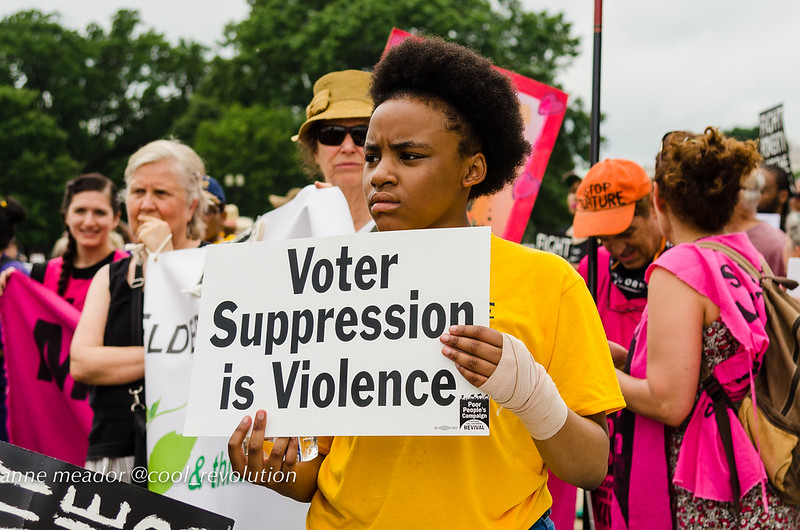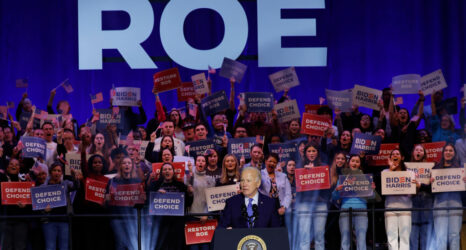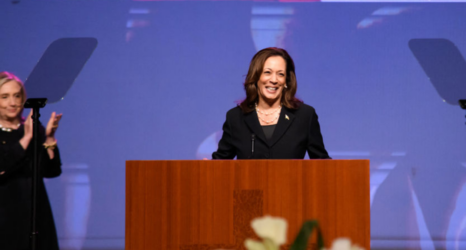
In 2016, assuming Black voters wouldn’t vote for him, Donald Trump tried to make sure they didn’t vote at all.
The so-called “Deterrence Project”—recently uncovered by Britain’s Channel 4 News by way of a leaked copy of an election database used by the campaign in 2016—was a project of Trump’s digital campaign team which targeted 3.5 million Black people in key states with digital ads aimed at getting them to stay home, rather than vote for Hillary Clinton.
Channel 4 reports the strategy behind “Deterrence”:
In 16 key battleground states, millions of Americans were separated by an algorithm into one of eight categories, also described as ‘audiences’, so they could then be targeted with tailored ads on Facebook and other platforms.
One of the categories was named ‘Deterrence,’ which was later described publicly by Trump’s chief data scientist as containing people that the campaign “hope don’t show up to vote.”
Black Americans—historically a community targeted with voter suppression tactics—were disproportionately marked ‘Deterrence’ by the 2016 campaign.
The Evidence
While Black Americans made up just 13 percent of the voters identified in the 2016 database, they constituted 29 percent of the “Deterrence” group.
And in certain states, the data was even pronounced: In Georgia, Black people make up 32 percent of the state’s population, but 61 percent of the Trump campaign’s “Deterrence” category. In North Carolina, where Black people make up 22 percent of the population, they were 46 percent of the “Deterrence” group.

In Michigan, a state where Trump won by a narrow margin, Black people made up 33 percent of the “Deterrence” category—while making up only 15 percent of voters. The same goes for Wisconsin, where the ‘Deterrence’ group was 17 percent Black voters, while only 5.4 percent of voters statewide are Black.
The campaign disproportionately targeted Black voters with negative ads about Clinton. In Georgia, for example, Trump aired the “Predators video,” an ad that includes a clip of Secretary Clinton calling Black youth “super predators.” After spending $55,000 on Facebook ads in Georgia, Trump won the state by 5 points.
The Fall of Black Voter Turnout in 2016
In 2016, Black voter turnout declined for the first time in 20 years in a presidential election—dropping to 59 percent of Black voters, compared to 65 percent in 2012. Combined with systematic voter suppression efforts, ‘Deterrence’ likely played a role.
Ongoing Misinformation Efforts
The Trump campaign is denying these claims.
“I would say I’m nearly 100 percent sure we did not run any campaigns that targeted even African Americans,” said Brad Parscale, the campaign’s 2016 digital director told PBS Frontline. And Tim Murtaugh, a Trump reelection campaign spokesman, dismissed the report as “fake news.”
Yet, according to The Lily, these misinformation efforts may be ongoing: Black women are still being targeted in misinformation campaigns, presenting a larger question of whose votes are actually protected this election cycle.
“Thirty days out we’ve got all this data that proves that Black voters—and Black women specifically—are targeted, and nothing will be done about it, that protecting our votes is not important enough which means no one’s votes are,” Shireen Mitchell, founder of Stop Online Violence Against Women, told The Lily.
Take Action
Want to do more? Find ways to get involved this election.
- Make a voting plan.
- Sign up to become a poll worker.
- Take action from home or in person by serving as a nonpartisan Election Protection volunteer.
You may also like:





